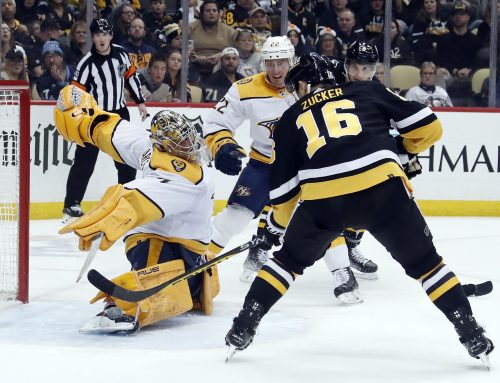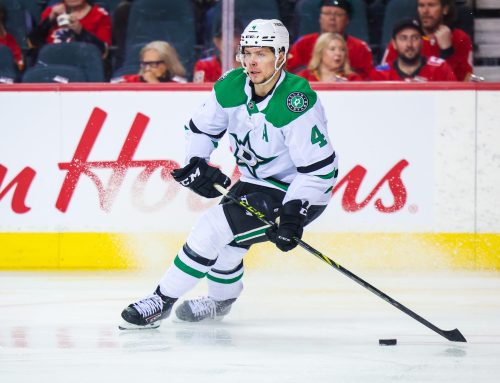There was an interesting article yesterday on Sportsnet that talked about some compliance buyout possibilities should that be a part of the trickle-down effect from the Covid19 impact on the current NHL season that bleeds into next year. It got me thinking about not only who I would imagine to be the top candidates to be bought out, but what kind of compliance buyouts and other measures we may see that will affect cap situations in the upcoming seasons. If the cap stagnates, or even drops, then to keep teams cap compliant, and to free up more money to burn in free agency, a compliance buyout is the easy solution. We say two with the lockout, so with only losing a portion of a season and a portion of revenues, only one buyout would likely be necessary.
I typically put out an article every spring covering some potential buyouts that summer, and I will do so again in the offseason once we have a better sense of dates and team situations, so I'll focus on specific players more there. When looking at potential buyouts, it's not just a player that a team wants to get off their payroll. If players got bought out as soon as they weren't valuable to their team, the entire business model of the NHL would explode. There are three main things I try to consider when looking at possible buyouts.
Cap Situation: This is the obvious one, but there is a subtlety to it. It's not just about looking at a contract and saying "this guy is way overpaid, we should buy him out" but the team must have some cap related pressure on them to make the move.
Term: Players just don't get bought out (aside from compliance buyouts) with more than two years left on their contracts. The fallout is too large and too long lasting for it to be worthwhile. With three or more years left on a contract, they find another solution, or tough it out to the two-year mark, and then make the buyout.
Replacement: There are two sides to a buyout, there is the subtraction of a player and a contract from the roster, but to balance there is also a player and a contract to take up that spot.
A good and recent example of this is the New York Rangers buying out Kevin Shattenkirk. Kevin's contract was a burden that the Rangers did not want to keep on the books, and knowing that they were in a rebuild, and the cap penalty in years three and four would be minimal, the cap fallout was not harmful. The Rangers could have possibly waited another year for the term to fall to one remaining season, however that would have further hurt the cap space during a crucial turnaround year, the 2021-2022 season, which was more along the lines of when they were expected to start to contend. Instead, with the space on defence freed up, Adam Fox and Tony DeAngelo have both had the space to flourish, showing that the ship can be turned around earlier than even the most optimistic observers would have expected.
****
The above also led me to thinking about who some of the biggest anchor contracts would be in cap leagues. I know that with the top 200 skaters for cap leagues that I put out every two months (most recently released yesterday), there is a lot of traffic to see who should be the more sought-after players, however this doesn't allow for us to really discuss the lower end, the players that have perceived value, but are really just dragging you down in cap leagues. I took some time yesterday to peruse some names that I found lower down the list than I expected, and I'll cover a few here.
Jeff Skinner (LW) – Buffalo Sabres
Cap Hit: $9,000,000 (Expires in the summer of 2027!)
As soon as we saw Skinner's contract, we all knew it was an overpay, and that it was going to look worse at the end of the deal, but we didn't know it was going to look this bad this soon. In the rankings, Skinner is only a few spots about Marc-Edouard Vlasic, who is a $7 million defenceman who put up only 15 points at the age of 32 (for those who aren't sure, that's pretty bad value). In fantasy, his owners (if there are any left) will be hoping that Buffalo sticks Skinner back next to Eichel for a full season (with appropriate powerplay time). Otherwise, his value is going to continue as one of the bottom in the league for a regular skater.
Justin Faulk (D) – St. Louis Blues
Cap Hit: $6,500,000 (Expires in the summer of 2027!)
Faulk also recently signed a new deal, and while his is only for $6.5 million per season, it still looks pretty bad. The kicker is that the contract doesn't even start until next season. None of us are really sure exactly what St Louis was doing here, as the main idea might be that Faulk can replace Alex Pietrangelo if the latter leaves in Free Agency this summer, however, if that is the case, we will just see Faulk get further exposed, making him the easiest target on a Blues team that is otherwise filled with reasonable contracts. Faulk's lack of powerplay time is also compounding his loss in value, as he was the main guy in Carolina, but with St. Louis, his production plummeted to a measly three powerplay points this season. You can find better than that on the wire in almost every league.
Alex Chiasson (RW) – Edmonton Oilers
Cap Hit: $2,150,000 (Expires in the summer of 2021)
Chiasson's name may be a bit of a surprise here after the last two names, as it was also a surprise for me to see him so low in the rankings, and that is exactly why he is worth discussing. Even when playing with Connor McDavid and/or Leon Draisaitl semi-regularly, his ceiling seems to be about 45 points. Generally, though, he is a 30-point player at best, and just coming out of his prime. Between rookies, bridge deals, and prove-it contracts, there are many better options with more upside. That being said, for a $2 million player, sometimes it's nice to just fill out your roster in a deep league with a guaranteed 20+ points.
Yanni Gourde (LW) – Tampa Bay Lightning
Cap Hit: $5,166,666 (Expires in the summer of 2025)
With all of the cap issues facing the Lightning, do you think they would want a do-over on a forward that they are playing in their bottom-six, while paying over $5 million per season? I think so. Gourde still managed 30 points, which isn't bad for a bottom-six forward, but for the price, that puts Gourde in the same kind of category as Derek Stepan, Loui Eriksson, and the aforementioned Skinner. If Gourde's deployment bounces back to 2018-2019 levels, then he has the talent to see his production bounce back. From last year to this year, he lost close to two minutes of ice time, with almost a full minute of that being powerplay time.
****
In the meantime, while we wait for hockey, stay safe everyone!
If you have questions, comments, or article requests, you can find me on Twitter @alexdmaclean.
All salary info courtesy of capfriendly, statistics are all pulled from FrozenTools.
****
Previous Capped articles:





 FLA
FLA CHI
CHI NYR
NYR PIT
PIT L.A
L.A COL
COL CBJ
CBJ TOR
TOR MTL
MTL ANA
ANA
 PHI
PHI VAN
VAN NYI
NYI
